Narendra Modi gets blamed for everything that happens in India. If he locks down for Covid, he will be attacked for doing it, if he does not impose a lock down, he will be accused of being a murderer. The leftist ecosystem will cry at the top of the voices from across the world with supporting articles in American publications which are supposed authenticate it.
As the second wave of COVID-19 pandemic rages through India, several questions have been asked of the Indian government and the way it has handled the upsurge. In an admittedly difficult situation, has the government been found wanting or has it mobilised all the resources available at its disposal to deal with situation? Let’s explore some of the issues.
Did India fail to anticipate second wave?
The basis of this question lies in the fact that between January 1, 2021 and March 10, 2021, India was averaging less than 20,000 new cases a day and for a significant period, this number had dropped to around just 10,000. Almost every other country had faced a second wave between October and December 2020 while India, after the first wave peak, seemed to have escaped the second wave. So much so, that many domestic ‘experts’ now castigating the government had written multiple articles during the first part of this year on why India will not have a second wave and thus India should let go off the remaining restrictions it had — like mask mandate and reopen schools and colleges. In the international media, the BBC ran an article on 15 February 2021, titled “Is the epidemic finally coming to an end in India?” The New York Times, Wall Street Journal and many others were similarly part befuddled and part reporting on India’s seeming escape from a second wave.
But the Indian government led by Prime Minister Narendra Modi was not complacent. Between January and February, when the numbers were at the lowest, the central government issued 17 advisories to various state governments to not let their guard down, to continue to test aggressively, to ramp up health infrastructure and to be prepared for all eventualities. On 17 March, when the daily cases were still in the 20,000 range, Prime Minister Modi himself held a detailed meeting with all Chief Ministers were he explicitly advised them to be on constant vigil, to strictly enforce social distancing and mask mandate, to retrain health officials and reinvigorate administration protocols in case they had become jaded.
So, what happened? It would seem that many of the state administrations did go lax, especially the states where the second wave seems to have originated — Maharashtra, Kerala, Delhi, Chhattisgarh, Punjab and Karnataka. By the time they started putting their acts together, the second wave was in full steam!
But why hold elections in the middle of pandemic?
Holding elections on due time is a constitutional requirement as assemblies are mandated to meet once every six months. Amending the constitution to have kept the assemblies of these five states — Kerala, West Bengal, Tamil Nadu, Assam and Puducherry — in suspended animation and under central rule, would have been a recipe of disaster and completely undemocratic. World over, elections have been held during the pandemic. India too held the Bihar elections in November 2020 without much ado.
The real question is, could big electoral rallies have been avoided? The BJP had made this exact proposal to the Election Commission of India before Bihar elections — that put off physical rallies and let there be only virtual campaigning. Every other political party strongly opposed this move. Their plea was the BJP is better organised hence they will have advantage in virtual world and therefore level playing field will not be there. In absence of consensus, the Election Commission could obviously not force a decision and the existing systems continued.
Every political party thus carried on with physical rallies in the five states that went to polls. Massive road shows were organised in Kerala by Rahul Gandhi. Mamata Banerjee held her mega rallies in West Bengal. The BJP did the rallies where it was contesting.
But there were no elections in Maharashtra or Chhattisgarh or Delhi or Punjab where the numbers started rising dramatically by end March. Therefore, the argument that election rallies are the culprit is not backed by data.
What about Kumbh in Haridwar?
Kumbh is very revered religious gathering in India. Its date and time are decided by saints and not governments. As the COVID cases had dropped in January and February, a conditional go-ahead, on the dates proposed, was given. Very strict protocols for entry, testing, quarantine, and other medical protocols were enforced during the gathering. When the Kumbh began on 1 April, India was reporting 72,000 cases. Out of this, six states alone — Maharashtra, Chhattisgarh, Kerala, Karnataka, Delhi and Punjab — contributed over 76% of the cases. None of these had anything to with the Kumbh. Uttarakhand on 1 April had 293 cases, on 8 April had 1,100 cases. However, as the pandemic surged all over the country, Prime Minister Modi himself intervened and requested the seers to end the gathering before due date and which they did.
India’s vaccination strategy — is it right?
India has given emergency use approval to two domestically manufactured vaccines — Covidshield and Covaxin. Out of this, Covaxin is totally indigenous, under a special programme sanctioned by Prime Minister Modi, where the government medical body ICMR partnered with Bharat Biotech to develop and deploy the vaccine in record time. Despite a malicious campaign launched against Covaxin, unfortunately by very responsible politicians, India formally launched the vaccination drive on 16 January 2021.
It was designed in conformity with medical opinion and WHO recommendations — to reduce mortality among the most vulnerable and then progressively move forward. Accordingly, vaccination of health care workers started on 16 January; on 2 February front-line workers became eligible; from 1st Mach all above 60 years and those above 45 years with comorbidities became eligible; from 1 April everyone above 45 became eligible and from 1 May all above 18 are eligible. So far India, has vaccinated 173 million people, the fastest pace in the world. It is available free of cost to all above 45 and to even those between the age group of 18-44 through the central government channel.
Other vaccines, which have been approved by drug regulators in USA, UK and Europe and the Russian Sputnik vaccine have also been given authorisation and many of them are in the process of arriving in India.
A question is asked as to why did India export vaccines before it vaccinated the domestic population? As on 11 May 2021, India has exported a total of 66.3698 million vaccine doses to foreign countries. At the same time, about three times as many vaccine doses have been administered within India.
There were contractual obligations for the manufacturers to supply vaccines to many countries, especially from where raw materials were sourced. In addition, it has been the time-tested tradition of India to stand up for the entire humanity in times of need. As US President and the French President both recently affirmed, when the world was in need last year, India helped the world with medicines and other supplies. When India is now in need of help, the world is returning the gesture of goodwill.
But why Build Central Vista during a pandemic?
After the great depression, US President Roosevelt was asked why was he investing so much in building new infrastructure, including a complete revamp of Washington DC, when the money could be used elsewhere? His answer is classical governance speak. Infrastructure investment sparks a virtuous cycle of economic recovery — jobs for semi-skilled and unskilled labour, demand generation for the entire manufacturing and core sector and a surge in allied services and hospitality sector. After a year of lockdown and depressed economic activity, the government of India is rightly spending money on productive economic activity, generating jobs, renewing urban landscape, spurring allied sectors and ensuring that those at the bottom of the pyramid are not further stressed by shutting down the only sector that can gainfully employ them. The central vista project is an already sanctioned project and it would make no sense to stop it and depress economic activity.
Has medical infrastructure shortage been fixed?
On 25 March 2020, India had 10,180 isolation beds. Today this number is more than 1.6 million. In the same period, ICU beds have increased from 2,168 to over 92,000.
India’s average daily medical oxygen requirement before the current peak was around 700MT. The requirement surged to almost 9,000 MT in a few days — a jump of almost 1,200%. The manufacturing challenge was immense. But even greater challenge was to meet the logistics of such surge in cylinders, and supply chain. Although there have been very painful days, but the worst phase is perhaps over as both the supply and logistics of delivery have started falling in place.
Production of drugs like Remdesivir have been ramped up from about 4 million a month to almost 10 million a month.
To augment manpower, the government has allowed, on expert advice, medical interns to be deployed with full safety protocol and payment of internship.
Prime Minister Modi has personally monitored the mobilisation of the armed forces for securing supplies and in setting up dedicated emergency medical facilities in multiple cities.
PM CARES fund has been deployed to install in situ oxygen generating plants in the biggest hospitals. Simultaneously, 551 new generating units, in addition to 162 already approved, have been sanctioned. DRDO is also using PM CARES fund to set up additional 500 medical oxygen plants. Thus, a total of more than 1,200 plants will come up. This will ensure each district in the country will shortly have medical oxygen generating facility. PM CARES fund has also been used to procure state of the art ventilators and over 150,000 DRDO developed SpO2 sensing based oxygen control system.
The free food and ration scheme, covering 800 million Indians, has been extended for another three months.
A new anti-COVID oral drug developed by DRDO — 2-deoxy-D-glucose (2-DG) has just been approved. It has proved very efficacious in fighting the infection.
What next?
India is battling the second wave with full dedication and resolve. The seven-day moving average of new cases has shown a dip after for the first time in weeks. As medical infrastructure is able to meet the demand, and new aggressive protocols of containment being put in place like Uttar Pradesh and Maharashtra, the expectation is that India shall get over this difficult period in the very near future. The unquestionable heroes of the battle that India has been waging against the second wave have been the medical professionals and the front-line workers. Their dedication and service shall hopefully soon bear fruits.
(Source:Gulf News)

Readers like you, make ESHADOOT work possible. We need your support to deliver quality and positive news about India and Indian diaspora - and to keep it open for everyone. Your support is essential to continue our efforts. Every contribution, however big or small, is so valuable for our future.

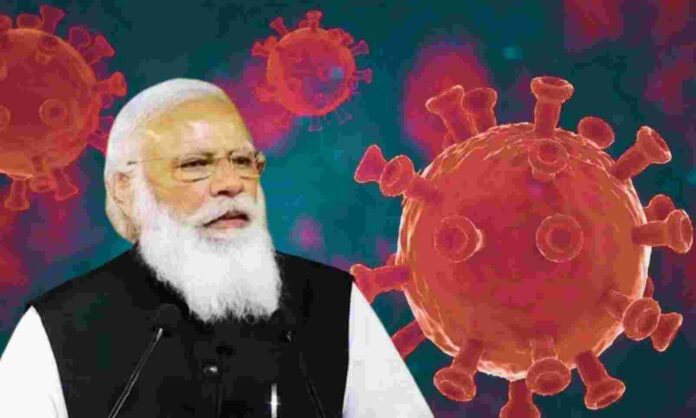
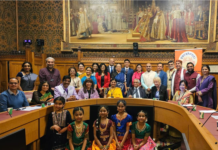

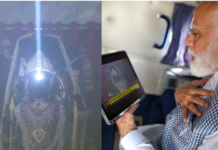

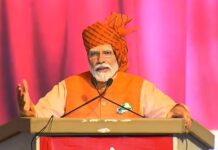
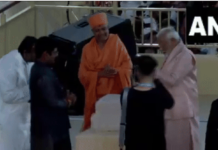




Every one has its own views and ready to defend its own views.Instead we should hear from others , then think what is good for all. India is in very difficult situation and commensense is, we should not be getting together in large numbers. But we saw what has been happening with people gathering in huge numbers during elections and Kumb Maila. Blame goes to every one but leader of the Nation will be held responsible for good and bad happenings. The Leader is Modhi.
What a fantastic analysis and breath of fresh air for Eshadoot readers fed up with the likes of BBC and other super-spreaders of doom and gloom. As is already mentioned few times in BBC Ka Bakwas quite rightly, just look at BBC editors, newscasters and reporters who have a tool kit whether writing about weather, roads, or vaccines to a hapless villager they prompt anti-GOI question! For the western media try as hard as they are nothing can either stop Modiji, his selfless dedication to our motherland. BBC and their armchair believers should hang their heads in shame when funeral pyres were on display, one of the most private and dignified rites a Hindu can wish upon their deceased. So well done Eshadoot to bring to fore the very thoughts a majority of Indian diaspora in UK and abroad and my friends back in India are thinking. It is interesting that Hindiu angle is always brought when discussing and pointing finger by referring to Kumbh Mela but the rallies organised by the defunct Congress and other opposition leaders. The argument or maths just do not make sense and most common Indian knows this. Just like the pathetic organisers of so-called farmer’s protests the anti-India brigade will find themselves at receiving ends as Modji is for the country not for himself